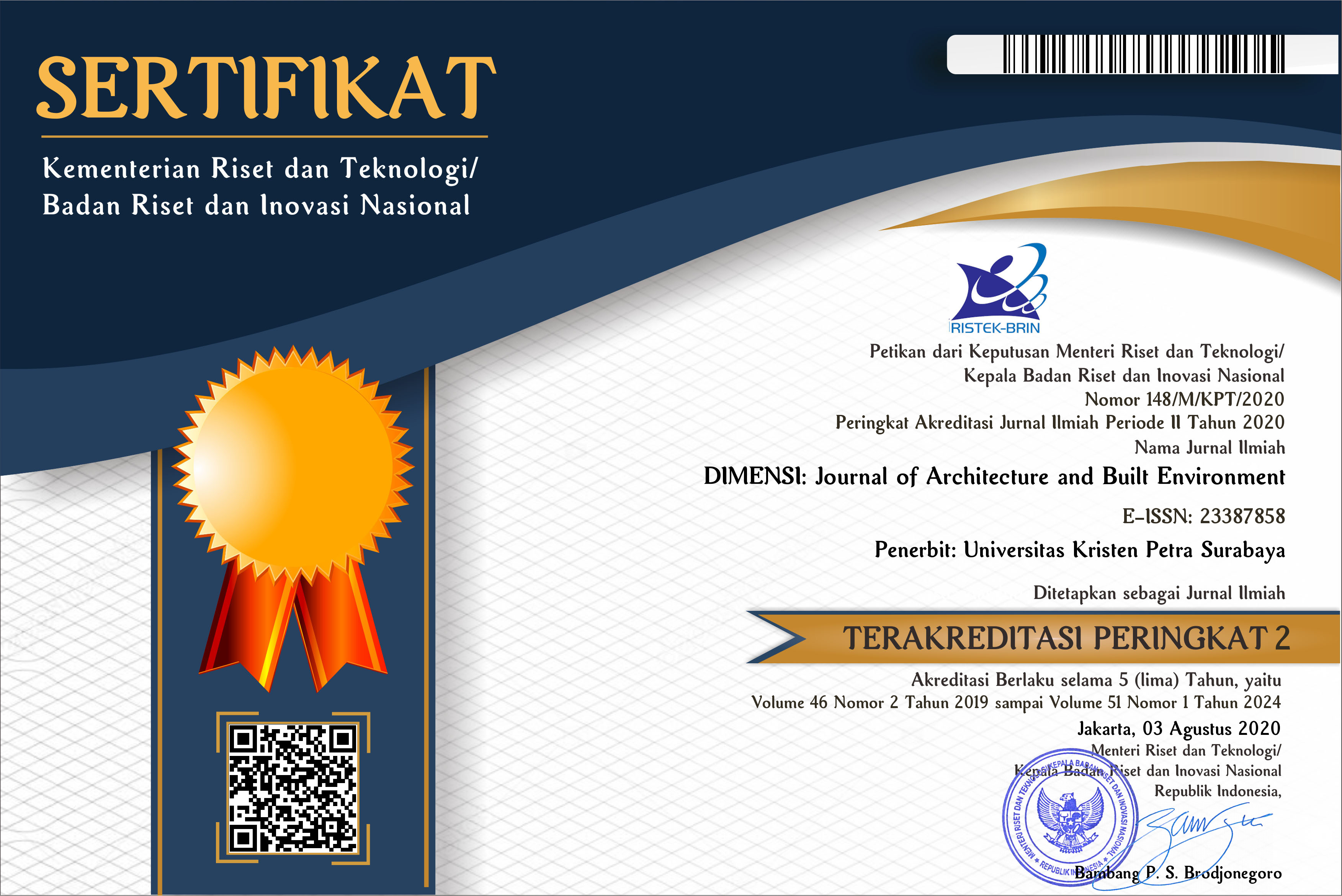POLA RUANG KOMUNAL DI RUMAH SUSUN BANDARHARJO SEMARANG
 :
:
https://doi.org/10.9744/dimensi.39.1.23-30
Keywords:
Communal space, social interaction, flats, kampong.Abstract
Behind the good will of government to build flats for low-income communities, there was a reduction of socio-cultural essence of life of its inhabitants. Reduction is happening in social interaction, initially living in a neighboring village, later turned into a mood of alienation and limitations because living in flats story a lot. This study used qualitative rationalistic approach, which aims to reveal the patterns of communal space as a space of social interaction of residents, expected results will be the next design evaluation flats. Research on patterns of communal space is taking the case of flats located in the Bandarharjo. More than eighteen years, residents tried to build social interaction with neighbors although no longer made in the halls of the road as well as in the villages. Their efforts are utilizing the functions of each floor of the building and the lobby open spaces around the ground floor of the building for social interaction among residents. Utilization of space functions has resulted in a communal space patterns in groups with the intensity of the use of high, medium, and low. The communal lounge with high intensity use tend to be close to their house.Downloads
Download data is not yet available.
Downloads
How to Cite
Edi, P., & ., W. (2013). POLA RUANG KOMUNAL DI RUMAH SUSUN BANDARHARJO SEMARANG. DIMENSI (Journal of Architecture and Built Environment), 39(1), 23-30. https://doi.org/10.9744/dimensi.39.1.23-30
Issue
Section
Articles
License
Authors who publish with this journal agree to the following terms:
- Authors retain copyright and grant the journal right of first publication with the work simultaneously licensed under a Creative Commons Attribution License that allows others to share the work with an acknowledgement of the work's authorship and initial publication in this journal.
- Authors are able to enter into separate, additional contractual arrangements for the non-exclusive distribution of the journal's published version of the work (e.g., post it to an institutional repository or publish it in a book), with an acknowledgement of its initial publication in this journal.
- Authors are permitted and encouraged to post their work online (e.g., in institutional repositories or on their website) prior to and during the submission process, as it can lead to productive exchanges, as well as earlier and greater citation of published work (See The Effect of Open Access).


















